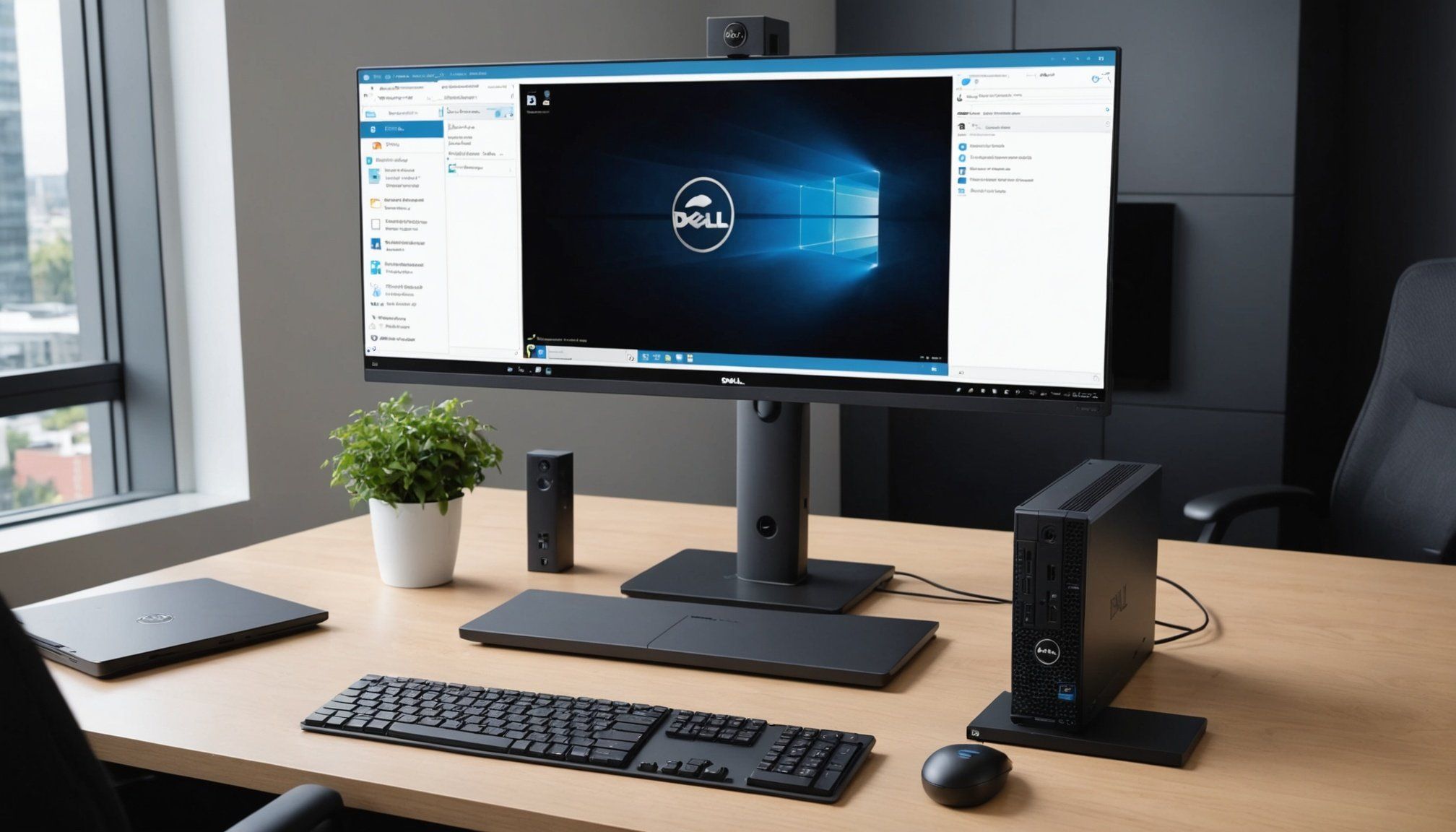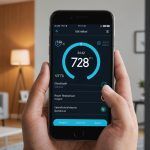Prerequisites for Setting Up Dell OptiPlex 7070 Micro for Zoom Rooms
Before initiating the Dell OptiPlex 7070 Micro setup, certain requirements must be considered to ensure seamless performance in a Zoom Rooms environment.
Hardware requirements are fundamental, with the Dell OptiPlex 7070 Micro featuring an Intel i5 processor, at least 8GB of RAM, and a 256GB SSD being optimal configurations. Compatible accessories like a high-definition webcam and a speaker-microphone combo are also necessary to enhance video and audio quality during meetings.
In terms of software prerequisites, a Zoom Rooms license is mandatory. This involves purchasing the appropriate Zoom license to access the software’s full suite of features. Additionally, ensure installation files are downloaded and ready for setup to facilitate a smooth installation process.
Network configuration and connectivity play a pivotal role in the system’s operation. For optimal performance, establish a stable internet connection, preferably via Ethernet, to reduce latency and connectivity issues during meetings. Configuring network settings tailored to your organisation’s infrastructure will ensure consistent and reliable service. Additionally, enabling firewall settings to permit Zoom Rooms traffic is advisable to maintain both accessibility and network security.
In the same genre : Ultimate guide to efficient airflow and cooling in compact sff cases featuring intel core i7-10700k
Step-by-Step Hardware Configuration
Efficient hardware installation for Zoom Rooms ensures seamless meeting experiences.
Unpacking and Connecting Hardware
Begin by examining the box’s contents. Confirm it includes essential components like a monitor, keyboard, mouse, and necessary cables. Follow these integral steps to connect your peripherals:
- Attach the monitor: Use the provided HDMI or DisplayPort cable, ensuring a secure connection to the computer.
- Connect the keyboard and mouse: Typically done via USB ports, guaranteeing accessibility and ease of use.
For improved tidiness, utilise cable management solutions. Excess cables can be neatly arranged with cable ties or clips, which can prevent tangling and enhance workspace aesthetics.
Configuring Display and Audio Settings
Once connected, the display needs optimisation. Adjust the monitor settings for the best video output, considering resolution settings and screen calibration. For audio settings, configure both microphone and speakers to match room acoustics. This involves selecting the correct input/output devices within your operating system settings. Testing before first use is crucial to confirm everything functions as expected. By practising these steps meticulously, you ensure an efficient and professional Zoom Room setup.
Software Installation and Configuration
Installing and configuring Zoom Rooms is pivotal for smoothly integrating video conferencing into your physical space. To begin, follow these steps to download and install the Zoom Rooms software on a Windows system like the Dell OptiPlex 7070 Micro.
Downloading and Installing Zoom Rooms
- Downloading the Software: Visit the official Zoom website, and navigate to the Zoom Rooms section. Download the latest software version tailored for your operating system.
- Installing on Dell OptiPlex 7070 Micro: Once downloaded, run the installer. During installation, ensure to select automatic updates for seamless improvements.
- Configuration: Upon successful installation, pay attention to initial setup settings. This includes configuring network settings and audio devices.
Customizing Zoom Rooms Settings
Post-installation, it’s essential to tailor Zoom Rooms settings for optimal functionality.
- Adjusting Audio and Video Settings: Go to settings to tweak camera resolution and sound levels. Ensure the camera is at eye-level and the microphone settings enhance voice clarity.
- Room Personalization: Assign a unique room name for easy identification and manage user roles, ensuring the right access levels.
- Security Features: Finally, enable password protection and waiting rooms. This shields meetings from unauthorized access, ensuring a secure collaboration environment.
Best Practices for Optimal Zoom Rooms Performance
Achieving an optimal Zoom Rooms experience requires consistent attention to both software and hardware. Regular updates are crucial. Ensuring that your software is up-to-date not only provides access to the latest features but also enhances security and stability. Similarly, keeping your hardware, like cameras and microphones, updated ensures compatibility and improved performance.
When it comes to peripheral enhancements, high-quality peripherals can make a significant difference in your meetings. Using advanced cameras and microphones will result in clearer visuals and audio, which contributes to a more engaging session. Look for devices with noise-cancellation and HD-quality to achieve the best results.
An often overlooked, yet vital aspect is optimizing internet speed and stability. To prevent disruptions, ensure your internet connection is robust and reliable. Use wired connections if possible, as they offer greater stability than wireless networks. Additionally, prioritising your device’s network traffic for Zoom can lead to a noticeably smoother experience. Configuring Quality of Service (QoS) settings on your router can help maintain a seamless connectivity during meetings, ensuring you stay focused and uninterrupted.
Troubleshooting Common Issues
Dealing with Zoom Rooms issues can be frustrating, but many common problems have straightforward solutions. Understanding the nature of the problem, whether it’s hardware or software-related, can significantly ease troubleshooting.
Identifying Hardware Malfunctions
Spotting hardware issues early can save time and frustration. Common symptoms include unresponsive devices, poor video and audio quality, or consistent connection dropouts. Begin by checking physical connections and ensuring all devices are correctly powered and connected. Loose cables or faulty ports are often culprits. If problems persist, try swapping peripherals with functional ones to isolate the malfunctioning hardware.
If these steps do not resolve the issue, it might be time to seek professional assistance or consider replacing defective components. Keep in mind, advanced diagnostics may require a technician’s expertise to avoid potentially damaging sensitive equipment.
Resolving Software Glitches
Software glitches in Zoom Rooms are usually predictable, glossed with error messages or crashing applications. Start by clearing cache and resetting the app configurations. This can alleviate many minor glitches. Reviewing Zoom Room logs can offer insights into the root cause of errors. These logs provide detailed records that can guide you towards the appropriate steps needed for resolution. If troubleshooting steps do not resolve the issue, reaching out to Zoom support may be the next best step.
Case Studies and User Experiences
In various business environments, the Dell OptiPlex 7070 Micro combined with Zoom Rooms has proven to be a game-changer. Companies have shared success stories, highlighting the seamless integration and enhanced productivity. For instance, a digital marketing firm successfully set up video conferencing in compact meeting spaces. They praised the hardware’s compact size and robust performance when handling simultaneous video calls.
User feedback on the performance and convenience of the Dell OptiPlex 7070 Micro is overwhelmingly positive. Many appreciate its ability to minimise clutter while providing reliability for day-to-day operations. The combination with Zoom Rooms amplifies this convenience, offering easy-to-use interfaces and smooth connectivity, essential for remote meetings.
Experienced users have identified some critical tips from their lessons learned. It’s essential to ensure adequate network infrastructure to support high-quality video calls, a common challenge encountered initially. Another invaluable tip is customizing Zoom Rooms settings to match specific meeting needs, enhancing the user experience. Overall, these insights and user experiences provide valuable lessons for businesses considering this setup, reinforcing its practicality and efficiency in diverse settings.











